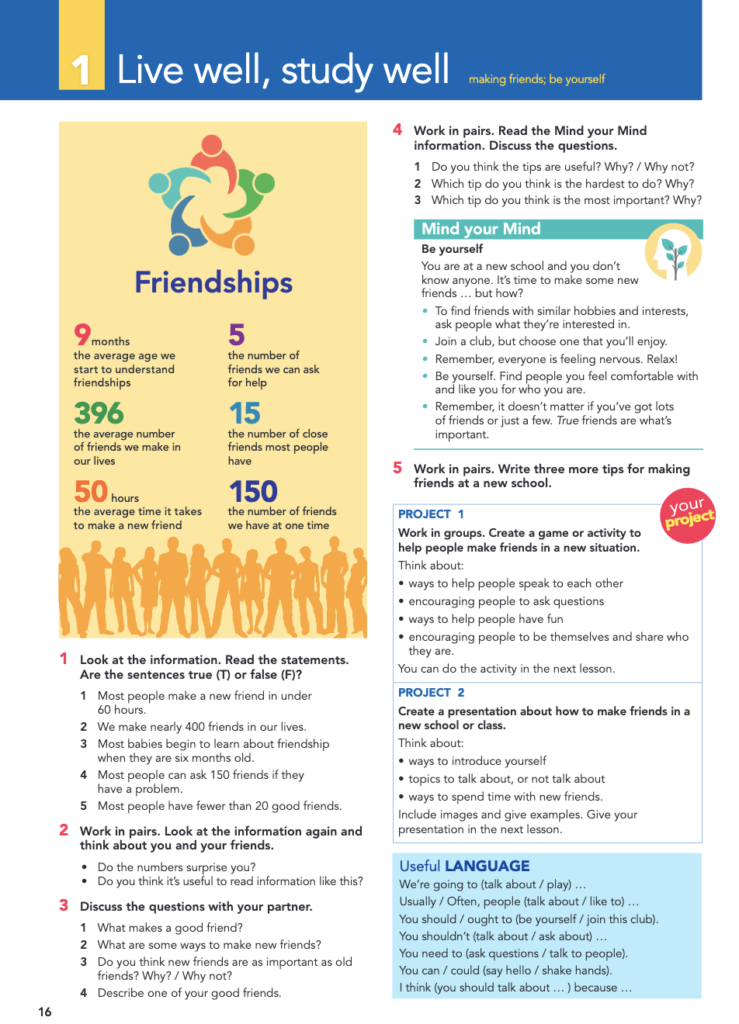We all want the best for our students. We want them to do well academically, pass their exams, communicate effectively, and thrive socially. But sometimes our focus on academic achievement and paper qualifications can take precedence over our concern for their wellbeing. Of course, that’s understandable. Well-being is difficult to quantify and challenging to assess. And yet, increasingly, we are realizing that the more self-confident, independent, resilient, and curious our students are, the better they learn. Both the 2021 OECD Social and Emotional Skills Study (OECD, 2021) and the Wellbeing and Academic Achievement Impact Study undertaken by Dr. Ariel Lindorff (Lindorff, 2020) showed clear connections between students’ wellbeing and their level of academic success.
The global pandemic, impacting the lives of more than 1.6 billion students and their schooling (UNESCO, 2021) has highlighted the need to address this issue, as students have struggled to continue their learning at home, working independently and often under difficult circumstances.
The good news is that as teachers of English we have plenty of opportunities to introduce activities and topics into the classroom that not only promote communication in English, but also help to develop our students’ social and emotional skills and encourage them to take positive action to sustain their sense of wellbeing.
Spending time in nature
One proven way to improve mental health and cognitive skills is to spend time outside and in nature (Weir, 2020). We can encourage our students to go outside by setting them photo challenges. For the lowest level students, for example, we can ask them to go for a walk and take a photo for every color that they can name. Students then share their photos (online, or in the classroom) and name the colors that they can see. Alternatively, students could be given letters of the alphabet and asked to take photos of things that they see starting with this letter (you might want to leave out X and Z unless you really want to challenge your learners!). For more advanced levels, why not give students whole phrases, or even idioms (e.g.: every cloud has a silver lining) and ask them to take a series of photos to represent these phrases.
Giving students the tools to deal with stress
We can also give students the tools to deal with anxiety and stress. ‘Find your Happy Place’ is a meditation technique that works well at all levels. Ask students to close their eyes and picture a place where they feel happy. It can be a real place or a place that they have made up. It could be a beach, a mountain, a forest, an art gallery, a library – they have the freedom to create their own happy place. Then have students work in pairs and describe their happy place to each other. Share these questions for them to think about as they work on their descriptions:
- How did you get to this place?
- What can you see? Turn around, what can you see now?
- What can you smell?
- What can you hear?
- What can you touch?

As students concentrate more and more on the details of the place they are visualizing, they are calming themselves and teaching themselves to focus their minds. As well as getting students to practice descriptive language for places, sounds, smells and senses, you are also helping them to create their own special private space, which they will always be able to return to when they feel stressed or anxious.
Live Well, Study Well
It is encouraging to see that coursebooks and resources are also increasingly acknowledging the importance of wellbeing in the English language classroom. In the New Close-Up series, we include a ‘Live Well, Study Well’ page after every two units. These pages focus on skills like resilience, forming positive habits, time management, and dealing with stress. Students learn strategies to develop these skills and then put them into practice through project work. The pages are supported by short videos for students on a number of the wellbeing topics covered in each book.

Why not try out the activities suggested here, or check out my webinar on ‘Teaching the Whole Student’, which has many more ideas. Then you could share your own experiences in the comments below.
Good luck, and happy teaching!
PS: Don’t forget to look after your own wellbeing as well.


